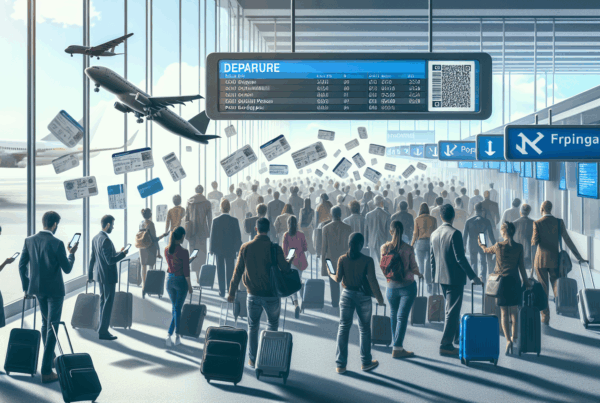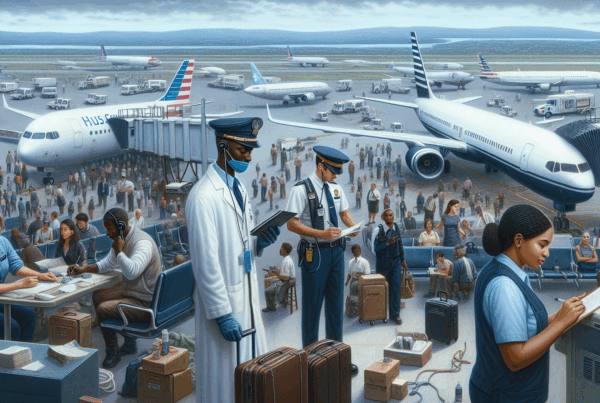The government Bayrou presents a Finance Bill for 2026 incorporating air taxes to diversify government revenue sources. The scheme aims to encourage more sustainable management of the airline industry by imposing new contributions linked to the environmental footprint of flights. In particular, the initiative provides for the application of fares that can be adjusted according to the ecological performance of airlines, while at the same time stimulating technological innovation. The aim is to improve the sector's competitiveness and strengthen the national budget balance through modern taxation. Experts see these measures as a strategic step forward for the future as a whole.
The Finance Bill for 2026, presented by the Bayrou government, introduces innovative air taxes aimed at transforming the aviation sector. The aim of these measures is to introduce a more balanced tax system, both environmentally and economically, by adapting rates to market realities and the challenges of ecological transition.
Project presentation and objectives
The project is intended as a response to the current challenges facing the air transport industry. By introducing a new tax structure, the government aims not only to regulate the sector, but also to encourage investment in cleaner technologies. This initiative, articulated around progressive taxes on airline tickets, calls into question the airlines' business model and is part of a drive to modernize aviation taxation.
Industry observers, like those commenting on recent changes, are already seeing repercussions. Here are just a few examples, Ryanair adjusts its offer in Germany in the face of these tax increases. This change in business strategy illustrates how tax adjustments can directly influence pricing policies and operator competitiveness.
Challenges for the airline industry
These innovative measures raise several important questions. On the one hand, they could help reduce CO2 emissions by encouraging the use of more efficient technologies. On the other hand, the impact on airline competitiveness remains to be measured. Recent discussions have shown that several industry players oppose too abrupt an increase in taxes.
At the same time, certain regions benefit from exemptions. For example, provisions concerning Corsica exemption and overseas territories have already been proposed to mitigate the impact on regional connections. The aim is to preserve regional accessibility while maintaining appropriate tax regulation, as detailed in the latest news.
Impact on rates and the market
Another dimension of this project concerns the adjustment of air fares to travelers. The most immediate increase could be seen on flights departing from France, where the DGAC has already announced a fare revision. Future travellers and airlines will have to adapt to these new parameters, as explained by this article.
The repercussions of this bill are not limited to a simple fare increase. They imply a global overhaul of airline business strategies, particularly for the big names in the sector. Competition between manufacturers, such asAirbus and Boeingis also being studied, with crucial issues relating to air transport, as illustrated by this presentation.
Technical aspects and tax innovations
The innovative nature of these taxes lies in their technical and adaptive dimension. By combining environmental and economic criteria, the government is proposing a nuanced approach that should encourage the adoption of less polluting technologies. This strategy marks a major step forward in the taxation of the air transport sector, and heralds a profound transformation in the way airport infrastructures are financed.
User experience and interactions
What's more, to ensure the smoothest possible dissemination of information on these measures, our platform offers subscribers exclusive benefits. These include ad-free browsing allows for optimized reading of content. What's more, instant validation of your pseudonym via your e-mail address ensures that your comments, published immediately, enrich the debate and provoke constructive exchanges. The aim of this system is to enhance the quality of interaction on the site and create a community committed to current issues.

Comparison of innovative air tax axes
| Objective | Strengthen public resources to finance innovative projects in the aviation sector. |
| Type of tax | Taxation based on route and flight category. |
| Mechanism | Calculation may vary according to distance traveled and technical characteristics of the appliance. |
| Economic impact | Direct impact on fares and airline competitiveness. |
| Range | Covers all domestic and international flights. |
| Innovation | Introduction of calculation and application methods unprecedented in the sector. |
| Compliance | Included in the finances 2026 with regular checks. |
| Control | Supervised by a specialized body to ensure effective implementation. |
| Impact on companies | Companies will be able to pass on some of these costs to consumers. |
| Long-term vision | Favouring a trajectory towards innovation in air mobility. |




